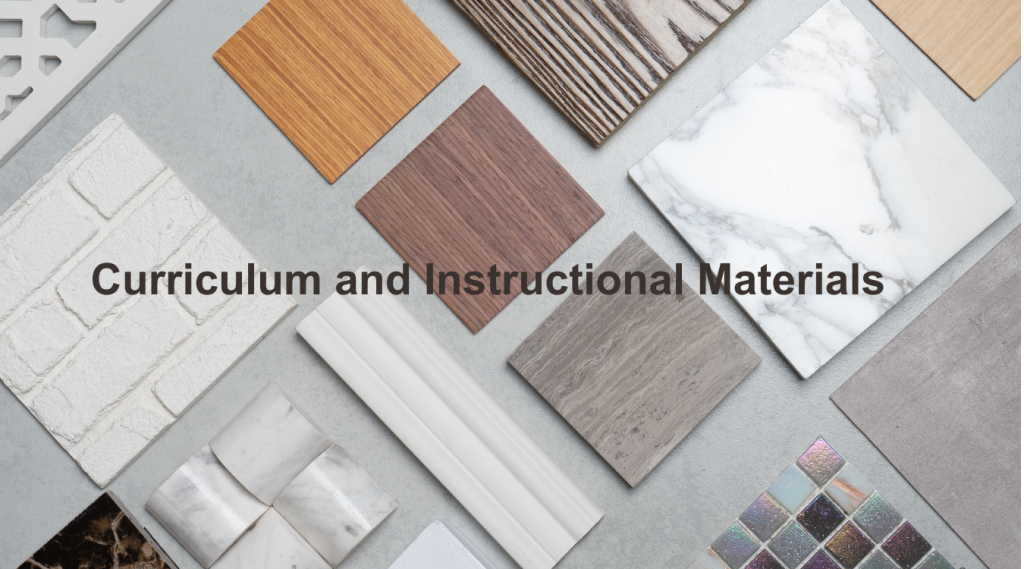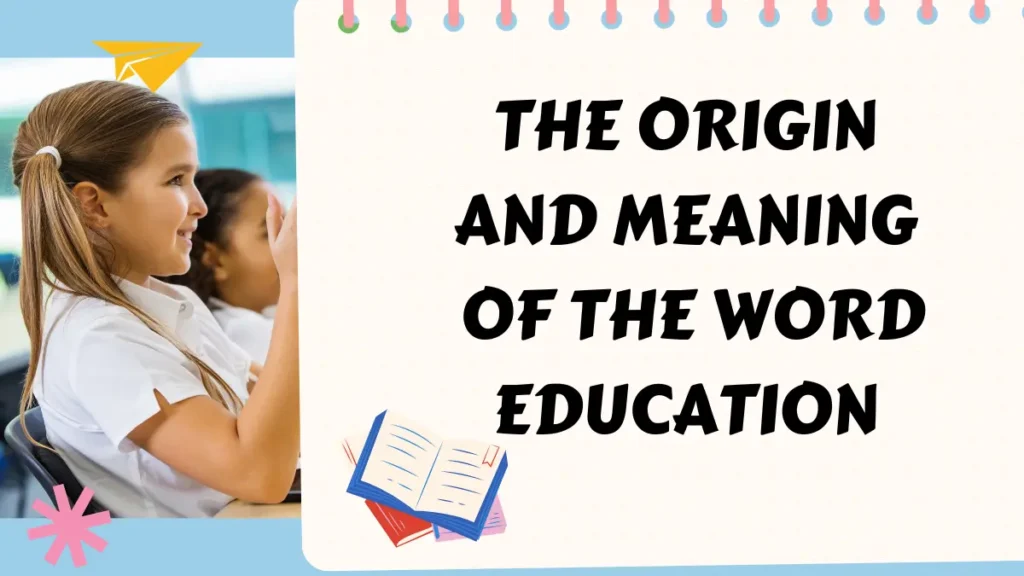Effective teaching requires a comprehensive approach that includes a well-designed curriculum and appropriate instructional materials. A curriculum is a set of standards, objectives, and subject matter that guides teachers’ instructional decisions.
Instructional materials, on the other hand, are the resources that teachers use to deliver instruction, such as textbooks, lesson plans, and multimedia materials.
In this article, we will explore the importance of curriculum and instructional materials in effective teaching and how they contribute to student success.
The Importance of Curriculum and Instructional Materials
Curriculum and instructional materials play a critical role in shaping student learning experiences. With a well-designed and researched curriculum and instructional materials, students can engage more and perform better.
The importance of curriculum and instructional materials cannot be overstated. This article will look at how curriculum and instructional materials can influence student engagement and learning outcomes.
How Curriculum and Instructional Materials Can Influence Student Engagement
Well-designed curriculum and instructional materials can have a significant impact on how engaged students are and their learning outcomes. Here are some of the ways:
- Curriculum design: Curriculum design provides a roadmap for teachers to ensure that they cover all crucial knowledge areas. It allows teachers to have a planned approach to ensure they help students understand, apply, analyze, evaluate, and create. When the curriculum is well designed, students can learn more effectively.
- Clarity: Instructional materials provide clarity. This type of material ensures that students know what they need to learn and when. It is designed to provide a framework that enables students to follow the subject matter in a logical sequence.
- Multimodal learning: Students retain knowledge in different ways. Instructional materials provide multiple modes of learning to accommodate different learning styles. Visual aids such as videos, diagrams, or images can augment students’ learning experience.
- Student motivation: Instructional materials can also increase student engagement and motivation. Materials that challenge students while allowing them to develop their interest in the subject will help them remain motivated.
Well-designed curriculum and instructional materials can have a positive impact on student engagement and learning outcomes. Teachers should be proactive and ensure that their curriculum and instructional materials are well-designed to ensure that students have the most engaging and productive learning experience possible.
Creating A Curriculum
A curriculum is a plan that outlines what is to be taught during a particular academic year. It includes various components essential for effective teaching and learning. The essential components of a curriculum are:
- Goals and objectives: A clear set of goals and objectives provides direction to teaching and learning. Goals set out the broad aims of education, while objectives detail the specific learning outcomes.
- Content: The content of a curriculum refers to the topics, concepts, and skills taught in a course of study. These can be customized to fit different teaching styles, making sure that all students can learn effectively.
- Instructional strategies: Effective instructional strategies are essential for making learning meaningful and engaging. These may include methods such as lectures, discussions, projects, and field trips.
- Assessment and evaluation: Assessment and evaluation help measure student progress and understanding of the subject matter. This allows teachers to make informed decisions about the effectiveness of their teaching methods and how best to adjust them.
How To Align Your Curriculum with National, State, Or District Standards

Aligning a curriculum with national, state, or district standards is essential for ensuring that it meets specific educational requirements. Here are some steps for aligning your curriculum with these standards:
- Identify the required standards: Review the standards for your specific educational jurisdiction. Determine the core competencies and learning objectives that need to be achieved.
- Map the curriculum: Identify where the current curriculum aligns with the required standards and areas where changes are needed.
- Revise the curriculum: Make any changes necessary to align with the required standards and competencies.
- Evaluate curriculum alignment: Continually assess and evaluate the alignment of the curriculum with the required standards and competencies.
Leveraging Technology to Create and Deliver Curriculum Content
Technology can provide numerous benefits when creating and delivering curriculum content. Technology can help make learning more accessible, interactive, and engaging. Here are some ways to leverage technology when designing your curriculum:
- Video technology: Video technology can be used to create engaging instructional content that supplements traditional instruction.
- Virtual learning environments: Virtual learning environments allow for interactive and immersive learning experiences that can be accessed online or through specialized software.
- Learning management systems: Learning management systems provide a way to manage and distribute course content easily and efficiently.
By utilizing technology, teachers can provide more personalized and engaging learning experiences that meet the diverse needs of their students.
Selecting Instructional Materials
Instructional materials play a crucial role in a student’s learning experience. They provide learners with information and serve as a guide for teachers.
Some reasons why instructional materials are important in engaging students and supporting learning objectives include:
- They provide students with visual aids to help them comprehend and connect with the subject matter.
- They make learning more creative and interactive by providing students with hands-on learning opportunities.
- They help teachers to align instructional strategies with learning objectives.
Tips For Selecting, Evaluating and Adapting Instructional Materials
Before selecting instructional materials, it is important to evaluate their effectiveness and appropriateness for the learning objectives. Here are some tips to guide you:
- Choose instructional materials that align with the curriculum goals and standards.
- Consider the learning styles and preferences of your students.
- Ensure that the instructional materials are up-to-date and relevant.
- Evaluate the instructional materials for accessibility and consider whether adaptations may be necessary.
Once you have selected the instructional materials and evaluated their effectiveness, you may need to adapt them to fit your students’ needs or curriculum. Here are some tips for adapting instructional materials:
- Simplify the material for students who struggle with reading or comprehension.
- Add supplementary material to the instructional materials to provide extra support or challenge for students with different abilities.
- Modify assignments to suit the learning style or language preference of students.
Implementing The Curriculum & Instructional Materials
Implementing the curriculum can be a significant challenge for teachers at the classroom level. However, these strategies can make it easier to implement a curriculum while ensuring that students are learning.
Strategies For Implementing the Curriculum in A Classroom Setting:
- Understand the curriculum and identify the objectives and goals.
- Create a plan for curriculum implementation that includes a timeline and specific milestones.
- Determine the effectiveness of the implementation plan by continually collecting and analyzing data.
- Make the necessary adjustments based on the data collected.
- Focus on student-centred learning to improve the effectiveness of the plan.
Techniques For Using Instructional Materials to Support Teaching and Learning Objectives:
- Identify the instructional materials to be used and ensure that they align with the learning objectives.
- Understand the appropriate use of instructional materials in terms of teaching methodology and learning style.
- Make instructional materials engaging to students by promoting active learning and creating opportunities for interaction with the materials.
- Incorporate instructional materials in lesson planning to achieve maximum benefits.
- Create materials that are accessible to all students regardless of their strengths and weaknesses.
Frequently Asked Questions
How Do Curriculum and Instructional Materials Differ?
Curriculum refers to the overall plan for learning, while instructional materials are resources used to facilitate learning.
What Instructional Materials Are Used in Schools?
Common instructional materials include textbooks, workbooks, quizzes, digital resources, manipulatives, and audiovisual aids.
Why Is Selecting Appropriate Curriculum and Instructional Materials Important?
Selecting appropriate curriculum and instructional materials is important because they directly impact student learning outcomes.
Conclusion
As we conclude our discussion on curriculum and instructional materials, it is clear that teachers play a crucial role in providing quality education. By selecting appropriate learning materials, instructors can enhance student engagement and promote independent learning. Technology has revolutionized the way we teach and learn; thus, educators must embrace it and integrate it into their teaching strategies. The curriculum should focus on not only academic content but also on promoting critical thinking and problem-solving skills. Additionally, administrators should invest in professional development for teachers to equip them with the necessary knowledge and skills needed to deliver quality education.
Read More:
- How to Choose a Study Programme That Aligns With Your Career Goals?
- How to Start a Profitable Small Batch Maple Syrup Business
- Email Management 101: Skills Every Student Should Master Before Graduating
- Top 5 MDM Solutions for Schools in 2025
- How Influencers Can Maximize Engagement with Video Captions on Social Media


